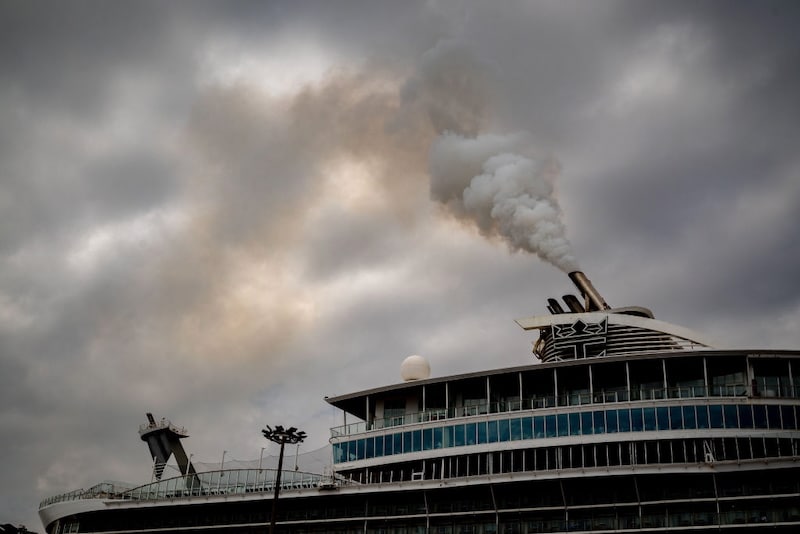This post was originally published on Eco Watch
Cruise ships are producing higher levels of toxic air pollutants than they did before the pandemic, according to a new study by the European Federation for Transport and Environment (T&E).
The analysis, “Europe’s luxury cruise ships emit as much toxic sulphur as 1bn cars,” found that despite the introduction of a sulphur cap four years ago, the 218 cruise ships operating in European waters in 2023 emitted the sulphur oxide (SOx) equivalent of a billion cars, a press release from T&E said.
“The pandemic provided some respite for port cities, but this is now well and truly over. Cruising is back and tourist hotspots like Barcelona and Athens are again choking on toxic air pollution from cruise ships. Venice has shown that tackling cruise ship pollution is possible, but bans aren’t the only way. Ports can significantly reduce pollution levels by forcing ships to plug into electricity at the port instead of running their engines, and by supporting the adoption of zero-emission fuels,” said Constance Dijkstra, T&E shipping campaigner, in the press release.
In comparison with 2019, the sheer number of cruise ships, how much time they spent in the vicinity of ports, as well as the amount of fuel they consumed, all rose by 23 to 24 percent. This led to a nine percent increase in SOx emissions, a 25 percent increase in particulate matter 2.5 and an 18 percent jump in nitrogen oxide emissions.
“The larger companies have more vessels and bigger ships,” said Jacob Armstrong, T&E shipping policy manager, as The Guardian reported. “But bigger isn’t better when it comes to emissions.”
The report found that the most polluted European port was Barcelona, followed by the coastal port of Civitavecchia — northwest of Rome — and Piraeus in Greece. Cruise ships in Barcelona emitted nearly three times the SOx than all the city’s cars. In Europe, SOx limits for cars are 100 times stricter than those for ships.
Air pollutants produced by cruise ships at Venice’s port fell 80 percent after the city banned large cruise vessels. T&E said it proves air pollution can be dealt with, but greater electrification of ports will be necessary “to save lives.”
“Venice, on the other hand, improved significantly,” the press release said. “The most cruise polluted port in 2019 dropped to 41st last year following a ban on large cruise ships entering the port that was introduced in 2021, leading to an 80% fall in SOx emissions.”
Even with Venice’s emissions falling, Italy still surpassed Spain as the European country with the most pollution from cruise ships. Norway had the most cruise traffic, though with smaller ships, and came in fourth in cruise ship pollution overall.
The operator spewing the most pollution was MSC Cruises. The company’s ships emitted almost as much SOx as Europe’s total from passenger vehicles. Including its subsidiaries, the biggest polluter was the Carnival group.
MSC and many other cruise lines have sought a cleaner alternative in liquified natural gas (LNG), with over 40 percent of the cruise ships ordered so far in 2024 powered by LNG. While the ships may produce less air pollution, they are still extremely destructive from a climate standpoint because their engines leak methane — a gas that has more than 80 times the heat-trapping capacity of carbon dioxide. As an example, P&O Cruises’ MS Iona emitted the same amount of methane as 10,500 cows produce in over a year.
“Switching from oil to gas is like trading smoking for alcohol. It may help the cruise ship industry to reduce air pollution but it is terrible from a climate perspective,” Dijkstra concluded.
The post Europe’s Cruise Ships Produce Toxic Sulphur Emissions Equivalent to 1 Billion Cars, Study Finds appeared first on EcoWatch.





0 Comments